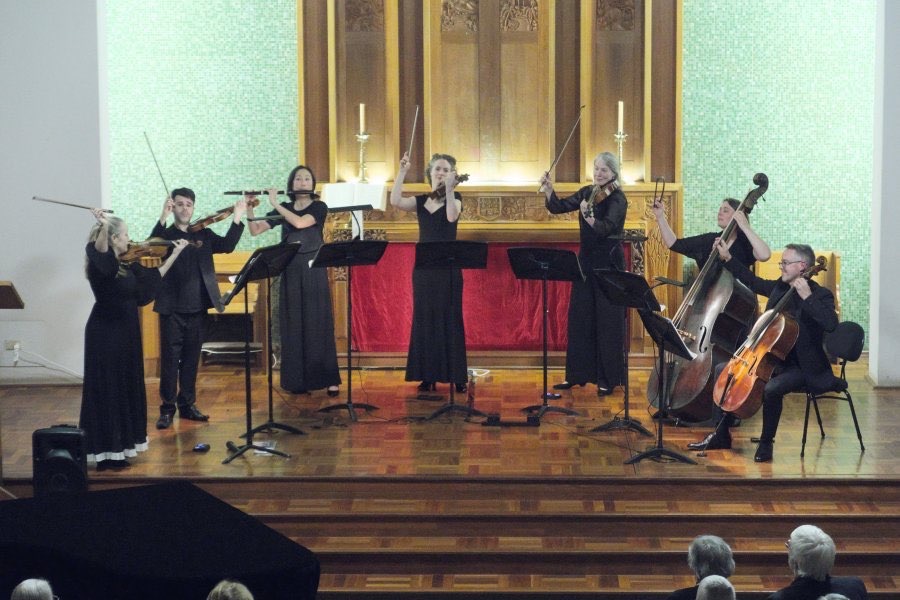Music / Beethoven’s Fifth, Australian Haydn Ensemble. At Wesley Uniting Church, Forrest, June 27. Reviewed by LEN POWER.
Ludwig van Beethoven’s Fifth Symphony arranged for a chamber group may have been the big attraction, but the Australian Haydn Ensemble thoughtfully gave us two other works by Luigi Boccherini and Ferdinand Ries that were fascinating and delightful in their own ways.
The Australian Haydn Ensemble was founded in 2012 by artistic director and principal violinist Skye McIntosh.
It has quickly established itself as one of Australia’s leading period-instrument groups, specialising in the repertoire of the late Baroque and early Classical eras.
The artists for this concert were Skye McIntosh, violin; Matthew Greco, violin; Karina Schmitz, viola; Nicole Divall, viola; Daniel Yeadon, cello; Pippa Macmillan, double bass, and Jessica Lee, flute. Each of these performers has a formidable list of credits and enjoys busy international careers.
Beginning with Boccherini’s String Quintet in C major, Op. 30 No. 6, Night Music of the Streets of Madrid, composed in 1780, we were immediately transported by the music to an evening in Madrid, complete with bells, soldiers’ drums, street singers, beggars and religious chants. It was delightfully visual music and was nicely played by the quintet of McIntosh, Greco, Schmitz, Yeadon and Macmillan.

All seven artists played the second work, Symphony No. 3 in E Flat Major by Ferdinand Ries, composed in 1816. Ries, a pupil, personal secretary and biographer of Beethoven, worked in London from 1813 to 1834.
A lyrical work with colourful melodies, stormy romantic moments as well as feelings of tenderness, his symphony may have influences of Beethoven’s teachings, but it is a work that makes its own statement. The ensemble gave it a sensitive and attractive performance, full of emotion.
Beethoven’s Symphony No. 5 in C minor, Op. 67, composed in 1808, is arguably one of the best known of all symphonies with its recognisable four notes opening. This arrangement is by William Watts, an enthusiastic arranger of the time of orchestral music for smaller combinations.
It would be reasonable to assume that this powerful symphony, played using Watts’ arrangement for only seven instruments would be expected to have a smaller sound, but from those electrifying opening notes, the cleverness of this arrangement is apparent. All of the colour and dramatic depth in the music is there and the ensemble’s performance was exciting, clear and wonderfully entertaining.
Who can be trusted?
In a world of spin and confusion, there’s never been a more important time to support independent journalism in Canberra.
If you trust our work online and want to enforce the power of independent voices, I invite you to make a small contribution.
Every dollar of support is invested back into our journalism to help keep citynews.com.au strong and free.
Thank you,
Ian Meikle, editor





